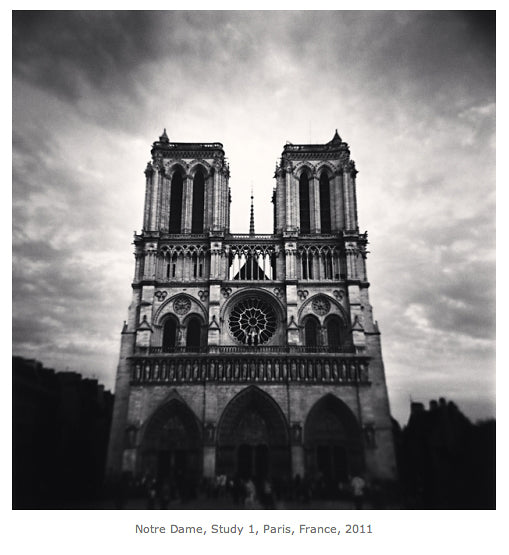One question that will inevitably arise as photographers start to make their own prints is "What do I sign them with, and how many should I make?" We've collected a variety of answers from professionals around the country to help you have a better understanding of how and with what these photographers are leaving the last touch on their artistic work. The concern, of course, is usually having a signature that is archival in quality (won't fade) and will be safe for the print (neutral in terms of acidity). The edition (number of prints you make) is also key, and as we saw from a recent editorial on our publication, the subject of how many prints should be made is hotly debated among photographers, gallery owners, and collectors.
SIGNING YOUR PRINTS
When I first started making prints for gallery sale, one gallery owner in California (who was not terribly experienced herself) threw up her hands saying, "NEVER sign the print!" I thought the exuberance of such a statement warranted further investigation, especially since I had seen plenty of well-known photographers sign and number directly on their prints, such as Tom Mangelsen, Michael Kenna, even Henri Cartier-Bresson. New printmakers of photography will often ask themselves: do I sign my prints? If I do sign them, how should I do it? While some photographers opt not to sign their prints, most do sign them, but the wide variety of signing practices should be highlighted so that you make the best decision about whether to sign your prints and how to do it in a correct way and in a way that is archival. Photography articles and blogs abound where individuals defend the signing of the print, signing in the margin, signing on the back, or signing on the matting.
MICHAEL KENNA, FINE ART PHOTOGRAPHER AND PRINTER
"I sign front and back of the print in pencil. Generally, pen ink changes color, so I would not encourage this. I have a Bill Brandt print where the original black signature is now purple/pink!"
"Most of my prints are quite small. They’re about 8 x 8" and are presented in exactly the same way. I’ve been doing essentially the same presentation for the past 25 years. I’ve had a few variations, but I prefer not to have to spend a lot time thinking about how I should do the work – a large size or a small size, a big edition or a small edition, this photographic process or another. I prefer my work to be an easy transition from photographing, processing, contact sheets, work prints, final prints and out into the world!" Website
NEVADA WIER, AWARD-WINNING TRAVEL PHOTOGRAPHER AND WORKSHOP INSTRUCTOR
"I do my own printing and labor over each print. I personally would rather not limit my editions but there are collectors who will not buy a print unless it is a Limited Edition. Each series is different in price and edition sizes." Website
TOM TILL, GALLERY OWNER AND ONE OF AMERICA'S PREMIER LANDSCAPE PHOTOGRAPHERS
"We have maintained a limited edition on all out paper prints of 350. The metal and other prints are generally a different set of images and we have decided not to offer that with those. The record keeping is a monstrous task.The posters are not limited editions. Obviously I'm not going to add that value when the customer is paying $15. I do sign everything." Website
RICHARD SEILING, OWNER AND MASTER PRINTER, WEST COAST IMAGING AND ASPEN CREEK PHOTO
"Whatever you do, don’t use a sharpie, because they can fade! Everyone does it differently. I don’t like signing over the image. It’s not aesthetically appealing to me. I think it works for painters because they are signing in the same paint and brush that created the painting with. Photographers don’t have that same option, and I don’t like mixing the media. I come from a more museum/conservation background and signing on the print has archival concerns as well. I don’t know if the pen used has solvents that will attack the print over time. I also don’t know how long different pens last, whereas I know that pencil on a cotton matboard can last as long as the pyramids of Egypt in the right environment. I will occasionally sign a print on the white border, and when I do that I use either a Sakura Pigma Micron pen which is advertised as archival and acid free, or a Staedtler Pigment Liner pen which is very permanent, and I’ve used it to mark my negatives. Not even fixer will take it off! We’ve tested the Sakura Pen-Touch Silver for smearing on canvas, and it dries the fastest and doesn’t smear once it has dried, unlike other paint pens we’ve tried. People like to use these for canvas and acrylic face mounts. But I prefer to sign on the back of canvases and acrylic face mounts. For me, the signature is the seal of authenticity of the work, not the primary identifier to the viewer. There are other ways with non-white mat presentations to tell the viewer who made the piece." Website
RELATED ARTICLES
Tom Till's Undiscovered Views on the Nikon D800e
Focus on Photographers - Michael Kenna
The Ethics of Limited Editions by Guy Tal




